COVID-19 Response: Panel of CEOs Explain What’s Changed for Good
 Mark Smith, Owner, Midas of Richmond
Mark Smith, Owner, Midas of Richmond
“It could’ve been very easy to say, ‘Hunker down, cover yourself, and let’s survive this,’” says Mark Smith of Midas of Richmond when asked about his business mindset at the beginning of the COVID-19 crisis. “I just chose to take the opposite route.”
“I just went in as upbeat. It’s a positive. ‘Yeah, this is not ideal, but there are going to be things that are going to capture market share. It’s an unfortunate way to look at this, but there are going to be people who survive this and there are going to be some who won’t. We’re going to turn it up even harder.’”
So Mark Smith bet big.
“We’ve always gone in kind of expecting success. Well, now we expect success just a little bit more.” – Mark Smith, Midas of Richmond
Smith ramped up his monthly marketing budget by more than 35%, added another TV station to his broadcast media strategy, doubled his radio spots, and hired Red Orange Studios, a Richmond, VA ad agency, to build a robust “More to Your Door” campaign – one he intends to invest in significantly.
“So the big thing that changed for me was my mindset,” Smith explains. “We’ve always gone in kind of expecting success. Well, now we expect success just a little bit more. We’re going to go full out. We’re going to capture market share. We’re going to hire folks. We’re going to grab what we can. We’re going to do it proactively, we’re going to do it aggressively, and we’re going to do it unapologetically.”
WHAT’S CHANGED FOR GOOD
A new “Go Big” mindset
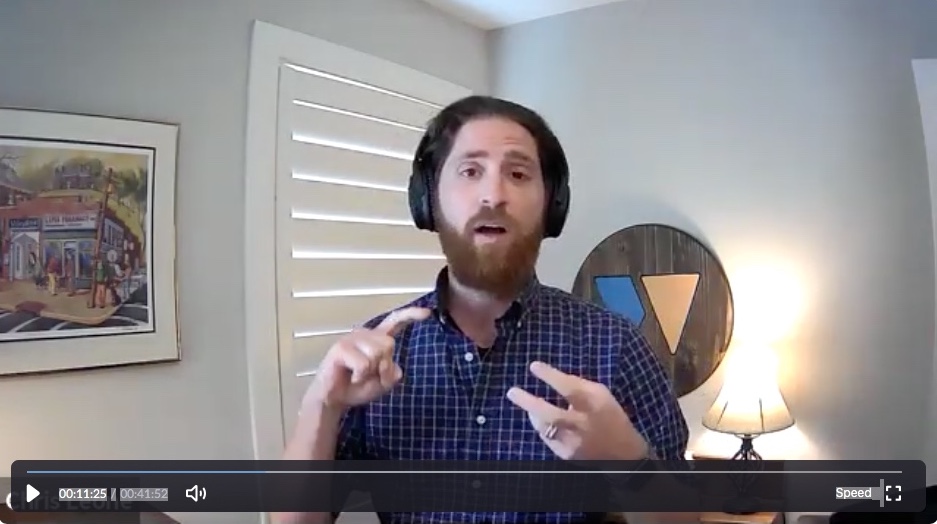
Chris Leone, CEO, WebStrategies
How was Chris Leone of WebStrategies feeling in the early stages of COVID-19? “I think maybe some of us kind of knew that this was not going to be a short-term thing,” he says. One of his biggest concerns for his digital marketing firm was figuring out how to approach customers when selling their services.
“It went from, ‘Um, yeah, sure – I’ll meet with you’ or ‘Now’s not a great time,’ to ‘How dare you try to call me right now?’ I mean, if you’re in sales or know people in sales, the responses we were getting were just vicious. The whole sales community is wondering, ‘How the heck do we behave right now through all of this?’”
Leone chose to focus on what he could control.
“We decided to create as much value as possible for our marketplace in the form of content and be as loud as we possibly could.” – Chris Leone, WebStrategies
“I can’t control what people are willing to give to me – their time, a meeting, a signed contract – but I can 100% control what I’m willing to give to them. So with that, our sales and marketing strategies shifted. We decided to create as much value as possible for our marketplace in the form of content and be as loud as we possibly could.”
Leone hired an additional marketing person, invested more in the content of his webinars, and tripled the amount of content on his website. Instead of asking for meetings, his salespeople offered free content – and the company has seen its first-meetings rate increase by 117% compared to last year.
What changed for good? Leone has learned to ask himself, “When the behavior of the marketplace changes quickly and dramatically, how can we adapt? So we remain focused on the things we can control instead of wishing for things to go back to how they were. We’re driving home the importance of being seen as a trusted authority in our space. [The pandemic] forced us to find new ways to do that, and we’re going to be able to carry that forward into the future.”
WHAT’S CHANGED FOR GOOD
Adaptability and focus on the controllable

Gwen Cooper, CEO, Patient Services, Inc.
Gwen Cooper, CEO, Patient Services, Inc. (PSI), was hired as the company’s new CEO on June 1, smack in the middle of the pandemic. To say she’s had a challenging first few months on the job is an understatement.
“We are the oldest patient assistance program in the country headquartered in Virginia. Our nurses, doctors, outreach managers and government affairs teams were working around the clock to make sure all our patients had every opportunity to get the care they needed…in their homes.”
In her new role it was imperative that she quickly understood the “before COVID” work habits versus the “current state” work habit to determine how well it was working for her new team of 50. “[Moving staff remotely] gave us an opportunity to really look at our staffing needs, contracts and benefits to help us understand where we could streamline our expenses. Especially when it became clear we weren’t coming back anytime soon.“
“We’re not coming back to the office. We’re going to have a permanent flexible work schedule and work out what our remote working looks like.” – Gwen Cooper, Patient Services, Inc.
The great news is that productivity has actually increased, Cooper reports.
“What’s changing for us at PSI is that we’re not coming back to the office. We’re going to have a permanent flexible work schedule and work out what out remote working looks like,” she says. Making that work now includes keeping an eye on staff members’ “emotional bank accounts” since she knows they’re missing day-to-day interactions with each other.
WHAT’S CHANGED FOR GOOD
Operational efficiencies and a shift to a remote work model

JJ White, CEO/Franchise Owner, Dale Carnegie
JJ White, Dale Carnegie CEO/Franchise Owner, is arguably the most affected by COVID-19 of our panel. “I’ve been a multi-unit franchise owner for Dale Carnegie Training for 20 years,” White explains. “Ninety-nine percent of what we’ve always done is bringing groups together in a room for transformational learning programs, bringing permanent behavior changes and soft skills, leadership, communication – things of that nature. When we started our week on March 16th, 99% of what we do ended.”
One percent of White’s business was not affected because Dale Carnegie was, at the time, one of the largest companies in the world delivering virtual instructor-led training. “So immediately, in one day, 1% of my business became 100% percent, but the sales weren’t there to compensate.”
In July, White – and the 108-year-old institution of Dale Carnegie – had to come to grips with the fact that it was time to completely reinvent how they went to market. Everything was evaluated, and nothing was so sacred that it couldn’t be changed.
“We took our core strengths and applied them in completely different ways,” says White. “We started to shift our entire operational model to a completely different deliverable. We helped existing clients acclimate to our new offer, and we found new clients and markets. The biggest change we made was to tear down the geographical boundaries of my regional sales team.”
“The biggest thing this crisis did for us was it solved so many constraints that we had in our business for years.” – JJ White, CEO/Franchise Owner, Dale Carnegie.
In a weird twist of fate, the pandemic could be seen as one of the best things that’s ever happened to his business. “The biggest thing that this crisis did for us was it solved so many constraints that we had in our business for years, especially being a global franchise network. We didn’t need a certain mass in a certain geographical area anymore. Everything is virtual and dispersed. It’s really enabled us to tear down walls that we should have torn down years ago, but didn’t have the courage to.”
White reports that sales are up, and he has confidence that his business will be OK.
CHANGED FOR GOOD
No more artificial boundaries or constraints
How has your business changed for good? Please share with us by leaving a comment.
Virginia Council of CEOs is a nonprofit dedicated to bringing CEOs of small and mid-sized businesses together to share experiences and to learn and grow with each other through peer roundtable groups and learning events. Learn more.
How to Build A Powerful Network: 7 Ways to Connect Today and More

Bulk of my job is planning meetings and events for CEOs. I am an extrovert who gets energy from being with a group of people. The current pandemic has temporarily halted our in-person meetings and events. Still, our mission to connect CEOs for learning and growth lives on, and one could argue that your business network and relationships are more important now than ever.
We tackled the topic of connecting and networking in today’s environment during a recent VACEOs Square Table hosted by two of our sponsors: Jay Carpenter, Managing Director, Fahrenheit Advisors and Patrick Morin, Partner, Transact Capital.
They graciously took time to share their own tips, and I found it interesting to have two different perspectives and two very different personality styles sharing their experiences. Below are my key takeaways. All work whether you are reaching out to a family member, friend, or client. The key is relationship building.
We all look forward to business meetings with great food and drink. But, until then, it’s important to continue connecting and building relationships now. What ways are you finding to connect? Leave a comment. I’d love to hear from you. Or, if you are a Virginia Council Member or Sponsor put what you’ve learned to practice. Sign up for our Summer Speed Networking and Music event on August 27!
4 Reasons Why You Should Connect
- You have more time. No travel needed!
- We are all navigating this new landscape together. Let’s fumble through this together.
- Everyone is craving an authentic business connection now. Aren’t you?
- You can’t wait for the next in-person meeting. You must find a way now or risk becoming forgotten.
7 Ways to Build a Business Network and Make a Connection in Today’s Environment
- Set up a virtual coffee/drink. It can be a short meeting over Zoom.
- Schedule a phone call. This allows you both to get up and move.
- Send a text message. One of my first non-family member text during the switch to remote work came from a vendor/member just reaching out to me. Not a sales text…he showed he cared.
- Go old school and send a note.
- Reach out in LinkedIn or other social media. Again, not a sales message…show you care.
- Attend a webinar and connect with other participants. Allows for an opening to connect further.
- Set up a walking meeting or a safe socially distanced drink on a porch.

About the Author
Connie Bruce joined the Council in 2007. As the Director of Operations & Member Services she flexes her strategic planning, event planning and customer service muscles each day at the Council, planning numerous meetings/events each year, all while managing day-to-day finances and membership questions and concerns.
Connie is a Certified Association Executive (CAE®), which is the highest professional credential in the association industry. Before coming to VACEOs, Connie served as an AVP at Bank of America for eight years, where she managed over ten employees. Prior to that, she discovered her love for hospitality at a national hotel chain.
7 Business Lessons My Daughter Should Know

It’s a fundamental question everyone, in one form or another – no matter their age, ethnicity or gender – eventually asks themselves about their career or their purpose in life: “What’s next?”
It’s a question that intrigued VACEOs Member Jennifer Boyden and VACEOs Sponsor Karen Elliott enough to initiate a confidential group discussion among their peers. More specifically, they wanted to know how women business owners and executives are approaching the topic.
For me, I wanted to start a list of things that I can share with my daughter, and with my COO, who is 29. – Jennifer Boyden, CEO, Heart Havens
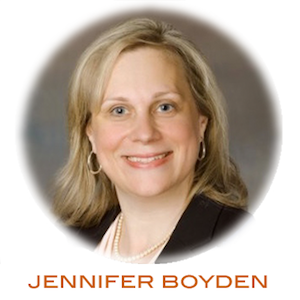
“We wanted to have this conversation with a broader group of women to understand how we think about our legacy,” explains Boyden, who is CEO of Heart Havens. “We wanted to hear about experiences and start to understand the ways that we can show support for each other, and explore the types of things we want those women coming up behind us to know. For me, I wanted to start a list of things that I can share with my daughter, and with my COO, who is 29.”
The result of their effort? Forty-five minutes of experience-sharing – where candid conversations about backgrounds, personal and professional hardships, and surviving in predominantly male-dominated industries (among other topics) were discussed. And everyone who participated agreed there was a need to continue the conversation!
In the spirit of Boyden’s wish to collect a list for her daughter, here are a few takeaways for future CEOs who may wish to follow their entrepreneurial instincts.
“7 THINGS I WANT MY DAUGHTER TO KNOW ABOUT BUSINESS”
(lessons from women CEOs and business executives)
- FULLY Participate in Networks and in The Conversations
“You will be well served.” - Be Aware of Patriarchal Systems
“Think about the system you’re partaking in and the choices you’re making. Make choices that are appropriate for you.” - Avoid Conversational Power Shifts
“Don’t start a conversation with, ‘I’m sorry!’” - Deliberately Seek Out a Mentor (Male or Female)
“There are some natural mentors that have happened along the way, and I’ve been grateful for them.” - Stop Being Your Own Worst Critic
“We spend so much time cutting ourselves down that when somebody says something that bugs us, it’s because we’ve already told it to ourselves 1,500 times.” - Don’t Stop Learning: Read and Evolve
“I’m done with that physical part of my value. I’m more concerned with the mental and emotional part of it.” - We’re All Similar, So Be Kind and Support Each Other
“We need that space where we are supportive and nice to each other and can connect, because we all have unique, yet similar, experiences.”
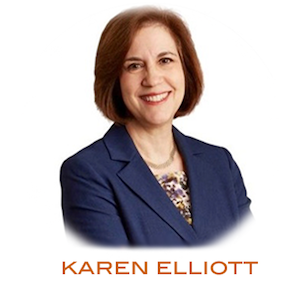 For Karen Elliott, Esq., who practices with Eckert Seamans, the question “What’s next?” was answered rather effortlessly by a retired CEO she met on a recent cruise trip. To sum up her perspective: “You learn, you earn, and then you find a way to return back to the community.”
For Karen Elliott, Esq., who practices with Eckert Seamans, the question “What’s next?” was answered rather effortlessly by a retired CEO she met on a recent cruise trip. To sum up her perspective: “You learn, you earn, and then you find a way to return back to the community.”
We hope the takeaways above are a starting place for you as you think about your own answer.
BOOK RECOMMENDATIONS FROM THE SESSION
KEEPING THE CONVERSATION GOING
Special thanks to Jennifer Boyden and Karen Elliott for initiating this important conversation. Another note of gratitude goes to Danessa Knaupp, founder of Avenue 8 Advisors (and a VACEOs Sponsor), for facilitating the discussion.
Are you a woman business owner who is searching for a peer group? One you can learn from and grow with? Consider joining the Virginia Council of CEOs. (A no-risk, no-cost membership offer is available for a short time.) Learn more about the VACEOs Community Membership.
Editor’s note: Permission to summarize the information shared in this confidential VACEOs Square Table session was granted by Karen and Jennifer.
Understanding Your Exit Strategy Options
All business owners will eventually exit their business, and I believe it is important for leaders to prepare well to exit well.
There are a number of tactics that owners can implement that will help them prepare well for an exit and achieve a sale-ready posture. The beauty of adopting a sale-ready approach is that it has two powerful benefits. First, it will make the eventual exit of your business easier, faster, and more lucrative, whenever and however that exit event may come. Business owners in a sale-ready position have invested the time in laying the groundwork that will enable a thoughtful, smooth transition into a sale or other capital-raising process. It will also enable you to respond quickly if you unexpectedly receive an attractive unsolicited offer from a potential buyer.
Second, the process of preparing your business for sale will make your business better, today. Business owners with a sale-ready mind-set think more strategically, have better insights into their companies, and make better decisions on where to take their business next. They, therefore, create a two-fold benefit: when the time comes to exit, they have a more valuable business and are better prepared to exit.
“M&A professionals often talk about two types of buyers: strategic and financial, yet there are subcategories of each that are meaningful to understand as you think about what the ideal buyer for your business might look like.” – Jonathan Brabrand
A critically important component of sale-readiness is for business owners to fully understand the various options available to them, both in terms of buyer categories and specific companies within each. Depending on the seller’s desired outcome, their options may include domestic and international strategic (corporate) buyers, private equity and other types of financial buyers, or both. It also may include groups that will take a minority stake in your business, in addition to those groups who look to acquire controlling majority positions in companies.
It is only with a full understanding of the available options that sellers can make informed decisions about which buyers to contact in the first place, and ultimately, with which buyer they choose to transact. Otherwise, they risk looking back on the sale of their business with regret at stones left unturned.
Sometimes my clients equate exiting their business with “selling out” to their primary competitor, and in most situations, this is not a pleasant thought. This aversion to turning their enterprise over to a despised competitor, including the feelings of the disloyalty to employees it would create, leads many business owners to turn their back on the whole M&A process. If you have certain competitors or other companies that you would never want to acquire your business, no worries—you don’t have to include them in the process at all.
The truth of the matter is different; there are many types of buyers from which to choose, each with its own unique characteristics. Let’s take a quick look at the primary buyer classifications to get a better sense of who they are and what they have to offer.
M&A professionals often talk about two types of buyers: strategic and financial, yet there are subcategories of each that are meaningful to understand as you think about what the ideal buyer for your business might look like.
Strategic Buyers
Corporate acquirers, whether they operate in competitive or complementary lines of business, are termed strategic buyers, because their acquisitions are focused on targets that provide a strategic fit with their overall growth strategy. Strategic buyers always have a “Make versus Buy” decision. Would it be quicker and/or more cost-effective to acquire a given business or to invest in creating the same capabilities from scratch in-house?
Strategic buyers can offer many attractive advantages to a seller. Chief among them is the ability for the selling owner to retire from the business after a short transition period, typically three to six months. In addition, for business owners that desire a full exit through a sale of 100 percent of their ownership, strategic buyers are likely the best alternative.
The benefits to your business of selling to a strategic buyer can also be attractive. Access to the buyer’s larger base of customers, more robust sales team, broader distribution capabilities, or a better sourcing network can all have a significant positive impact on your business’s future. The primary downsides to strategic buyers are the potential loss of the business’s independent identity and the possibility of cost-cutting, such as elimination of back-office functions that can be handled by the buyer’s current staff.
Strategic buyers can be further categorized by the location of their corporate headquarters. International strategic buyers often operate their US divisions independently with a hands-off approach, particularly if they don’t already have substantial operating businesses in the US. Domestic strategic buyers, on the other hand, are more likely to have higher levels of integration with their acquisition targets, yielding more efficient operations and cost savings that drive higher earnings to the bottom line.
Financial Buyers
Financial buyers are professional investors that acquire private companies with the goal of improving them before selling them several years later to realize a return on their investment. Hundreds of financial buyers are looking for small to medium-sized private businesses to acquire in the US, generally falling into one of three categories:
- Private Equity Groups
- Fundless Sponsors
- Family Offices
Private Equity Groups
Private equity groups are by far the largest cadre of financial buyers, both in terms of quantity and purchasing power. According to PitchBook, 563 new middle-market PE funds (funds of less than a billion dollars) were raised in the 2016–2018 timeframe, representing an aggregate of $148 billion of capital to invest in private companies.
The private equity model is simple and straightforward. A PE firm (the general partner, or GP) raises a pool of capital from investors (limited partners, or LPs) to then make equity investments in private companies. Private equity LPs often comprise insurance companies, pension funds, and college endowments that allocate a portion of their capital to private equity and other alternative investments, which offer higher returns with higher levels of risk.
Once a private equity fund raises the targeted amount of capital, the fund is closed to new LPs and the clock begins. PE funds typically have to invest all the committed capital in acquired businesses, called portfolio companies, within the first three to five years and then exit all the investments and fully return the capital to their investors within ten years. GPs earn an annual management fee, often 2 percent, of the total fund amount and then take a meaningful portion, often 20 percent, of the gains the fund generates. To increase the potential return on invested capital, PE firms will acquire businesses using a combination of their fund’s capital and bank debt that will be repaid by the portfolio company over time.
Because PE firms are professional investors and not business operators, they will control the Board of Directors, but rely completely on the existing management teams to run their portfolio companies. As a result, PE firms will motivate their management teams to increase the value of the business through options and the ability to own a minority portion of equity. The quality of management and their desire to remain in leadership positions are so important to most PE firms that they will not pursue acquisitions where management is not strong or wants to retire post-closing.
Fundless Sponsors
Fundless Sponsors are groups that pursue the same investment strategy as PE firms, but have not raised a fund of committed capital. Instead, they maintain a network of potential backers and raise the capital needed to make an acquisition on a deal-by-deal basis. For this reason, fundless sponsors are viewed as having more risk of a deal falling apart before closing than PE firms that control a fund of committed capital. That said, I have worked with a number of very successful fundless sponsors who were great partners to their portfolio companies.
Family Offices
Family offices make investments in private businesses like a private equity group, but their capital comes from one or more high-net-worth individuals or families. As such, they are considered more patient capital since they don’t have time pressure to sell their investments and return capital to LPs. In fact, many family offices take a long-term approach to their portfolio companies or may even plan to hold their businesses indefinitely. Family offices also typically use less bank debt in their acquisitions, which many business owners find more comforting.
PE-Backed Strategic Buyers
Once a private equity firm has made an investment in a stand-alone business, or platform company, they often seek to grow that platform by making smaller, add-on acquisitions. This PE-backed platform company thus becomes a hybrid category of buyer, blending the characteristics of both a strategic and financial buyer. It is common for platform companies to be particularly aggressive in pursuing add-on acquisitions in the first twelve to twenty-four months of PE ownership, when sufficient time exists to reap the rewards of the add-on growth strategy before the PE firm needs to sell the overall platform.
When you have a full understanding of the range of strategic and financial buyers that exist and what each can bring to the table in a potential transaction, you can make the best choice of partner for you and your business. For some sellers, a strategic buyer offers the ideal option for a successful exit. For others with a longer-term horizon and appetite to continue leading their company forward, private equity is the perfect partner.
Jonathan Brabrand is a Managing Director at Transact Capital Partners, a boutique M&A advisory firm and long-time corporate sponsor and supporter of the Virginia Council of CEOs.
Editor’s Note: This article was adopted from Jonathan Brabrand’s new book, The $100 Million Exit: Your Roadmap to the Ultimate Payday. If you would like to connect with Jonathan, you can reach him via email at jonathan@transactcapital.com or connect with him on LinkedIn.
COVID-19 Update: Treatments, Vaccines, Herd Immunity, Testing +
We all have questions about COVID and how to keep ourselves, our family, and our colleagues healthy and safe. Today, we find that we are providing custom advice on everything from testing and temperature checks, to what to do if you spike a fever in the middle of the night, to what are the most important things personally right now to be as healthy as possible. We’ve even gone on virtual tours of offices, providing feedback on how to improve the safety of the environment.
It’s a new frontier for healthcare providers, no doubt!
Are you in search some reliable, up-to-date medical information about the COVID-19 virus? Each week, Dr. Steven Bishop, Director of Wellness at PartnerMD, provides a COVID-19 update on Facebook Live, explaining in easy-to-understand terms the latest information related to the virus.
For example, on July 22 Dr. Bishop:
- discussed promising vaccines from Phizer, one from Moderna, and one from AstraZeneca
- shared his thoughts on why there is a focus on metabolic health
- discussed testing in Virginia
- answered the question, “Does the increase in positives indicate immunity sharing?” and more.
Listen in on that video session here:
DR. BISHOP TO PRESENT TO VACEOs MEMBERS ON AUGUST 6 AT 2:00 PM
Dr. Bishop regularly advises clients and their leadership teams on COVID and how to maximize their resilience against the virus – both as a company and as an individual when it comes to your personal health. He’ll be giving a virtual presentation to the VACEOs community on August 6 at 2:00 PM. Don’t miss this opportunity to ask him direct questions. Here’s a link to register. (VACEOs Members and Sponsors only.)
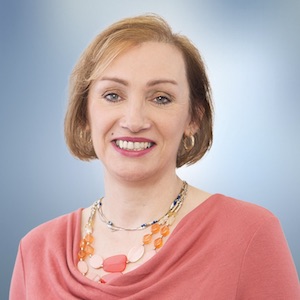 ABOUT THE AUTHOR
ABOUT THE AUTHOR
Janet Kiss is a Membership and Corporate Sales Associate at PartnerMD and is available for one-on-one and/or roundtable conversations for VA Council of CEO Members.
Editors Note: PartnerMD is a Sponsor of Virginia Council of CEOs.

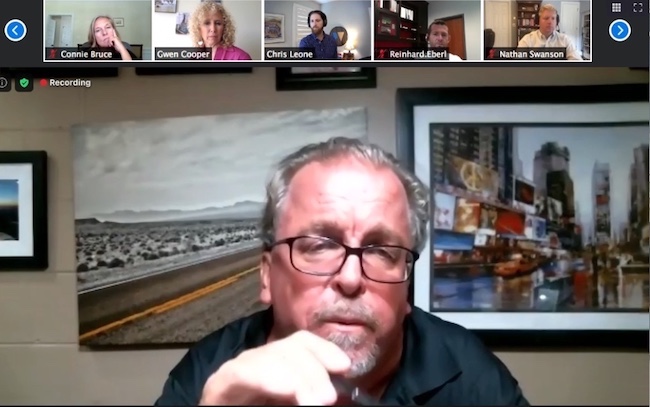 Mark Smith, Owner, Midas of Richmond
Mark Smith, Owner, Midas of Richmond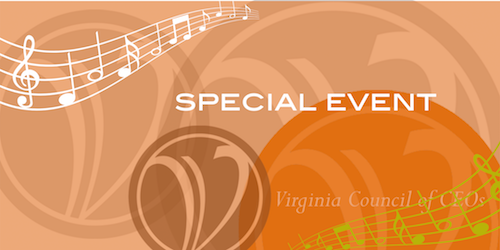



Recent Comments